
Hands-on, Practical Guidance for Educators
From math,
literacy, equity, multilingual learners, and SEL, to assessment, school counseling,
and education leadership, our books are research-based and authored by experts
on topics most relevant to what educators are facing today.
Answers to Your Biggest Questions About Teaching Secondary Science
Designed for just-in-time learning and support, this practical resource gives you brief, actionable answers to your most pressing questions about teaching secondary science.
- Grade Level: 6-12
- ISBN: 9781071916377
- Published By: Corwin
- Year: 2024
- Page Count: 192
- Publication date: January 16, 2024
Review Copies
Review copies may be requested by individuals planning to purchase 10 or more copies for a team or considering a book for adoption in a higher ed course. To request a review copy, contact sales@corwin.com.
Description
Your guide to grow and flourish as a science teacher!
The past two decades have seen a paradigm shift in science education, thanks in large part to the Next Generation Science Standards (NGSS), which advocate a move away from procedural lab investigations and direct instruction and toward increased emphasis on reasoning, sensemaking, phenomena exploration, problem solving, and collaboration. Under this new paradigm, students are learning real science as scientists practice it, so that more and more students are actively investigating questions and pursuing solutions of their own making. As part of the Five to Thrive series for early-career educators, this comprehensive guide provides those who are new to teaching science, as well as seasoned teachers looking to enhance their practice, the fundamentals to develop best teaching practices that reflect their students’ experiences and requirements.
Written by experienced science educators, Answers to Your Biggest Questions About Teaching Secondary Science provides practical guidance on successful strategies and techniques for teaching science in a way that gives every student the opportunity to learn, grow, and achieve at high levels, while providing opportunities to develop their agency and authority in the classroom, ultimately resulting in a positive science identity.
The book is organized around five overarching questions and answers that will help you most thrive in your secondary science classroom:
- How do I build a positive science community?
- How do I structure, organize, and manage my science class?
- How do I engage my students in science?
- How do I help my students talk about science?
- How do I know what my students know and how can I use that information to plan and move them forward?
The book concludes with a sixth question—Where do I go from here?—that provides guidance for growing your practice over time, including discussions on self-care, advocating for students, and an extensive discussion on growing your professional network.
Woven throughout, you'll find helpful sidebar notes on fostering identity and agency; access and equity; teaching in different settings; and invaluable resources for deeper learning.Strive to become the best science educator you can be; your students are counting on it!
Author(s)
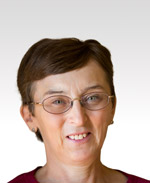
Karen Mesmer
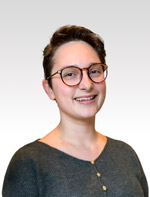
Enya Granados
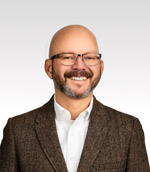
Kevin Gant
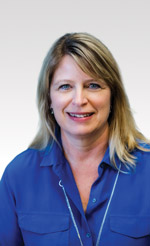
Laura Shafer
Laura Shafer, PhD, is a Senior Program Officer and Academy Instructor for the Knowles Teacher Initiative. She taught high school Physics, Biology, Chemistry, and Integrated Science focusing on facilitating student engagement in the practices of science to develop disciplinary knowledge. She designed and implemented curriculum components for a graduate science education methods course for preservice teachers focused on supporting preservice teachers in developing and facilitating lessons in alignment with the Next Generation Science Standards. She provided supervision for pre-service teachers developing and implementing approaches for working individually and collaboratively with resident mentor teachers. She designed and facilitated professional development workshop series for K-12 educators, administrators and language resource personnel to support understanding and implementation of NGSS and integration of CCSS.
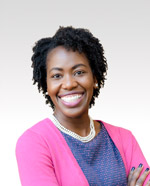
Ayanna D. Perry
Table of Contents
Acknowledgements
About the Authors
Introduction
Chapter 1: How Do I Build a Positive Science Community?
Chapter 2: How Do I Structure, Organize, and Manage My Science Class?
Chapter 3: How Do I Engage My Students in Science?
Chapter 4 How Do I Help My Students Talk About Science?
Chapter 5: How Do i Know What My Students Know and How Can I Use that Information to Plan and Move Them Forward?
Chapter 6: Where Do I Go From Here? How Do I Keep Learning?
References
Index
Reviews
Among the many resources on teaching science, this book stands out as an essential compendium of practical suggestions, thought-provoking ideas, and links to resources that support what it means for teachers and students to thrive and flourish in today’s teaching and learning environment. Drawing heavily upon the wisdom of accomplished teachers and research on effective teaching and learning, this book provides much-needed guidance on navigating the complexities of today’s science classrooms.Page Keeley
Finally, a survivor’s guide to teaching! Unlike most pedagogical books, Answers to Your Biggest Questions About Teaching Secondary Science gives you just that—answers. From first day of school name games to year-end assessments, this educator team has brilliantly created a library of practical, implement-tomorrow structures, strategies, and tools. Cheers to a thorough teacher cheat sheet!Briana H. Clarke
This is the book science teachers have needed for a long, long time. It is both practical and profound, providing students and beginning teachers with a multifaceted vision of excellent teaching and clear strategies for progressing toward that vision. Veteran teachers will find numerous entry points to reflect on and refine their own practice, and work collaboratively with colleagues to improve education for all students.Nicole M. Gillespie
The Center for Aquatic Sciences
This is the book every science educator needs! It is organized around key questions that have the power to unlock great teaching. The authors have broad expertise and insights to offer, and they have gathered resources so that readers can easily go deeper with additional perspectives. Read it straight through or pick it up and read a section corresponding with a current dilemma—the accessible and straightforward ideas are sure to inspire.Cynthia Passmore
UC Davis
The only constant is change, and this book provides a tool for those trying to navigate all the new challenges teachers face in this new era of teaching. Answers to Your Biggest Questions About Teaching Secondary Science does a great job of acting as a roadmap for those currently in teacher training programs, new teachers, and even veteran teachers.Chris Monsour
Tiffin Columbian High School
If you are a beginning science teacher (or considering a change to your science classroom) and you do not know what you do not know, read this book! This book provides an insight into things you should consider about teaching science effectively that may not be covered in depth in an education program. This book is a great start to your journey in science teaching.Anthony Tedali Stetzenmeyer
Knowles Teacher Initiative
This book poses concise questions that are foundational for educators to answer to achieve great science teaching. Additionally, it provides specific tips, checklists, diagrams, and resources that new and veteran educators will find invaluable for improving teaching and cultivating the joy of science with their students.Karen Olson
Baraboo High School
Review Copies
Review copies may be requested by individuals planning to purchase 10 or more copies for a team or considering a book for adoption in a higher ed course. To request a review copy, contact sales@corwin.com.
Related Resources
- How can we show students the beauty of nature? [Lessons and Strategies]
- Keeping the Conversation Going in Science Class [Blog]
- The Right Questions to Promote Student Learning [Blog]
- Types of Formative Assessment in Science [Checklists and Assessments]
- What does equity in science teaching look like? [Book Excerpt]
- What is three-dimensional teaching and learning? [Book Excerpt]

